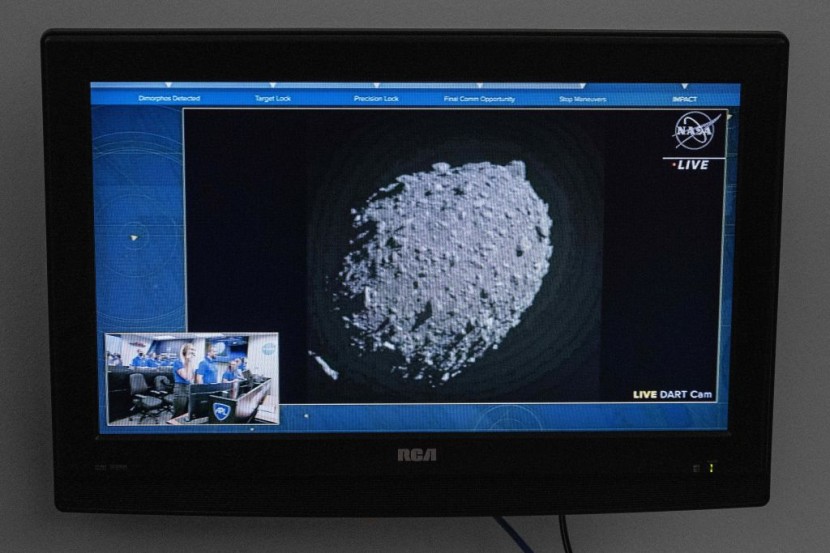
NASA's $330 million Double Asteroid Redirection Test (DART) successfully collided with its target asteroid on Monday evening in an attempt to determine whether a human-made vessel can change the cosmic object's trajectory.
The director of the Johns Hopkins University Applied Physics Laboratory (APL), Ralph Semmel, said during a news conference after the DART crash, that for the first time, humankind was able to demonstrate that it has the ability to autonoumously target and change the trajectory of a celestial object.
NASA's DART Mission
The act of striking an asteroid with a high-speed projectile is expected to nudge its orbit, and for one that is headed toward our planet, it could be enough to change a direct hit to a near miss. In the DART spacecraft's last moments, it sent back a series of photographs of the asteroid, Dimorphos, as it approached at more than 14,000 miles per hour.
NASA's spacecraft spotted its target asteroid only about an hour earlier, as a dot of light. Then, the pile of celestial rubble quickly grew bigger and bigger, until the picture of the asteroid's surface strewn with boulders filled the screen. The mission's engineers were on their feet, cheering the mission's success, as per the New York Times.
Semmel said that normally, losing signal from the spacecraft is a very bad thing, but in the case of the DART mission, it was the ideal outcome. While there was one more partial image taken, the data never made it back to Earth as the spacecraft had smashed into the asteroid.
A planetary scientist at the laboratory who works on the mission, Nancy Chabot, said during the NASA webcast that the success of the mission was "amazing." Policymakers have, for many years, lacked the urgency to finance efforts to protect the planet from asteroids. But the discovery of large asteroids that could destroy our planet changed that situation.
According to Reuters, now, experts will determine how much of a success the DART mission was after further ground-based telescope observations of the asteroid next month. However, NASA officials hailed the immediate outcome of the Monday test, arguing that the spacecraft achieved its designed purpose.
Was it a Success?
NASA Deputy Administrator Pam Melroy, who is a retired astronaut, said minutes after the impact that the space agency works for the benefit of humanity. He added that the mission's success is the fulfillment of that goal. He said it was a "technology demonstration that, who knows, someday could save our home."
DART was launched by a SpaceX rocket back in November 2021 and made most of its voyage under the guidance of NASA's flight directors. Control was later handed over to an autonomous onboard navigation system in the final hours of the journey.
The director of planetary science at NASA, Dr. Lori Glaze, said that while it would take some weeks before scientists know for sure whether the impact achieved its intended goal, she was convinced something remarkable was achieved.
She said that humanity is now embarking on a new era where there is the possibility of having the capability to protect itself from something as dangerous as a harzardous asteroid impact. "What an amazing thing; we've never had that capability before," she said, BBC reported.
Related Article : NASA Spacecraft Will Hit Massive Asteroid Next Monday; Here's Where to Watch It Live








